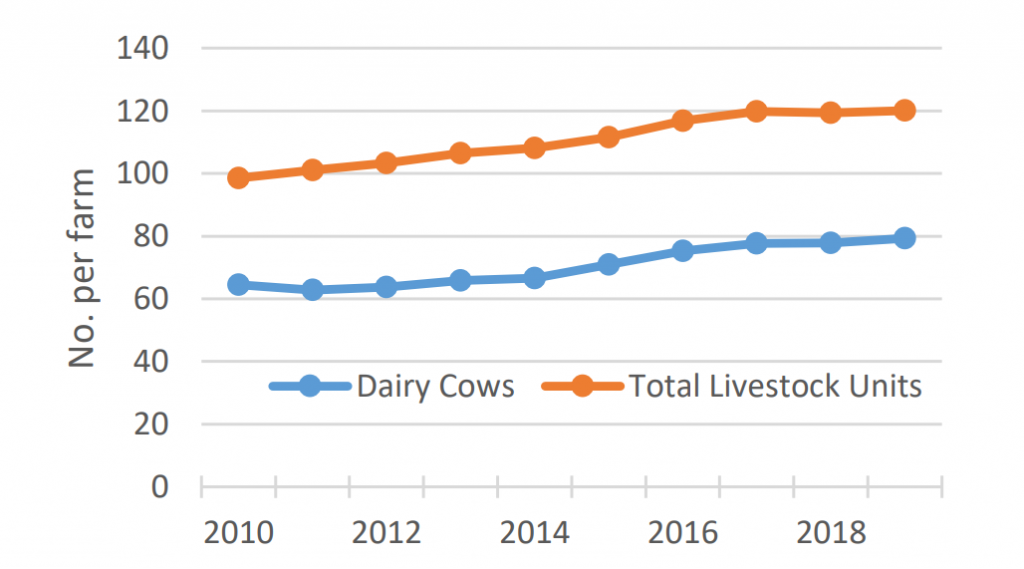Dairy herd numbers (on a cows-per-farm basis) have increased by 25% over the last decade.
Figures from the 2019 National Farm Survey (compiled by Teagasc) show significant structural changes on Irish dairy farms, with the average (dairy cow) herd size having increased to 80 in 2019. That’s up from 64 in 2010.
According to the data, the biggest expansions took place on farms in the eastern and midland regions of the country. This, says Teagasc, is due to additional capacity to expand in these regions.
The nationwide structural change (on Irish dairy farms), has led to both an increase in milk production and production efficiency.
The figures show an increase in the average volume of milk produced and sold per hectare over the period between 2010 to 2019.
In 2019, the data indicates that the “average milk production level” was 11,7999L/ha.
The decade hasn’t been without its challenges. Overall, there was a significant increase in the average volume of milk produced and sold per hectare but, in 2012, extreme weather conditions led to a fodder crisis. Also, in 2015, there was a slowdown in productivity as a result of lower milk prices.
With the current expansion in production and improvement in productivity, dairy stocking rates have also increased over the decade. The stocking rate was 2.09 LU/ha in 2019, compared to 1.9 LU/ha in 2010. 2018 saw a drop, due to drought-like weather conditions.
There was also a clear increase in what Teagasc describes as the average dairy farm’s ‘utilised agricultural area’ (UAA) – going from 55ha to 58ha over the decade. There was also an increase in the forage area – from 34 to 38ha.

